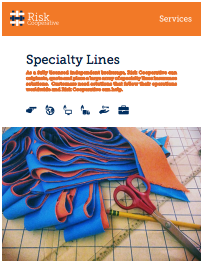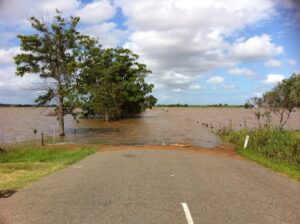Insurance Solutions
Contingency Insurance
Risk Cooperative provides contingency insurance programs aimed to help organizations manage the unexpected when planning strategic or high-profile events. Whether a sports, marketing, entertainment or other specialized event, our suite of contingency insurance programs works to protect revenue streams.
Program Highlights:
- Comprehensive protection against unexpected events, natural disasters or other factors which could impact revenues associated with an event
- Highly customized and bespoke insurance policies
- Event cancellation programs including due to threat of terrorism or political violence
- Non-appearance
- Natural disasters and weather coverage
- Death and disgrace
Resource Library
Hurricane Ian’s devastation is pushing already strained insurers in Florida to the brink of collapse, and demonstrated that rate increases and restricted coverage are not enough to protect their bottom line from threat of climate change here and now.
Key takeaways:
The Cost of Doing Nothing | The status quo leaves insurers to retreat from the barely profitable property and casualty market while millions of people enter into extreme poverty without the benefit of insurance to help communities rebound from climate events.
Leveraging the Power of Insurance | By pushing to align insurance requirements and regulations, like climate resilient building codes, insurers can influence consumer behaviors. promoting the adoption climate resilient codes on a wider scale.
Using Insurance to Build Back Better | Insurance access is key to a healthy economy, ensuring both businesses and governments can facilitate capital investments, maintain operations, and recover from costly disasters in timely fashion. Requiring stronger guidelines and rethinking the risks they underwrite could increase profitability for insurers while saving lives.
As the conflict in Ukraine continues to unfold and the world anxiously awaits a peaceful resolution, the effects of Russia’s aggressions are reverberating around the globe.
Key takeaways:
Impacts of Sanctions & Shortages | With billions of dollars removed from the Russian economy by sanctions, shipping embargoes, and the voluntary closure of corporate operations, limited production of critical resources the region is adding to the current economic pressures.
Revisiting Political Risk Insurance | Firms have been too complacent in terms of risk analysis. Political risk insurance can help offset some of the financial losses, but needs to be applied beyond regions deemed high-risk if it is to help in situations like this one, where Russia was extricated from the global supply chain in a matter of weeks.
Insurance Alone is Not the Solution | Proactive risk management must become part of every operation’s business framework.
As the world gathers for COP26, still reeling from the effects of the COVID-19 pandemic, seized up supply chains and seized up willingness to reengage in multilateralism, will world leaders have the courage to confront our dire climate change reality? For far too long, climate change was presented to the world as a horizon issue. One that could be ignored and left for future generations to ward off or survive. What is painfully clear is the need to address climate change in the present tense, despite fortress nations being brought to their knees by climate disasters each year for the last decade, is being missed. In the calculus to do something, the cost of inaction thus preserving our carbon heavy status quo, seems to outweigh the necessary investments (and divestments) towards net-zero.
In the U.S. for example, government pledges for climate risk resilience are falling short of the whole of society peril posed by climate threats. Instead, pledges of post-disaster and recovery support look like ad hoc funding designed to address single events affecting single communities, as opposed to shoring up climate resilience across the nation. One of the reasons this is the case is that risks and threats are often mistakenly siloed into a taxonomy of hazards such as floods, fires, storms, wind, and rain, as examples. The lived reality, however, is that each of these (un)natural hazards are entirely correlated to one another and are being exacerbated by climate change and anthropogenic activities. Rather than funding climate resilience one threat and one disaster at a time, a share of economic output (GDP@Risk) should frame a long-range investment strategy.
How we fund pre-disaster resilience and post-disaster recovery is meant to merely indemnify people, which is bringing them to the material state they were in prior to an economic loss. In short, people are not expected to profit from insurance, if they are so lucky to be insured in the first place. This leaves a yawning insurance protection gap that tragically swallows those households and communities that can least afford climate change and other hazards by virtue of existing on a check-to-check financial treadmill. Insidiously, low-income families often reside in low-lying areas in low-quality housing. As a result, the principle of merely being made “whole” along with building and reconstruction codes that still err on the side of bricks and sticks rather than climate resilient construction methods—which may add to costs but would also add to survivability—is priced out of reach. This creates a vicious climate adaptation cycle and contributes to the rise of climate change refugees and long-term disaster displacement as communities cannot afford reconstruction.
The net result of this yawning protection gap is those costs that could be borne by private insurers if they embraced technology and approaches to reducing the premium expense ratio, are passed on to taxpayers and society writ large. The most expensive form of risk capital is risk capital that is not strategically accrued over a long horizon and actuarially sound. Indeed, many public disasters risk financing and insurance programs are themselves financially underwater like the very communities they are meant to aid, which exacerbates already stratospheric national indebtedness. In the era of unchecked climate risk, as the waters are rising, the fires raging, and the winds howling, both the public and private balance sheets with the wherewithal to improve climate resilience are in retreat—not to mention the fact that when speed matters most, disaster response is anything but swift.
There are mechanisms that can make a difference and the summiteers gathered for COP26 would do well in exploring market making structures that address the critical financial question of who pays for climate change? The simplistic answer of course is we all pay. The correct answer, however, is to not assume a proverbial public sector cavalry will respond, least of all on its own. This, after all, is the source of moral hazard in climate risk mitigation, for the people and communities who unevenly contribute to climate change, are not the first in line in bearing its brunt. Risk sharing mechanisms that can shore up climate resilience and speed up economic recovery are hardly utilized and if so, they are anything but strategic. For example, disaster response agencies going cap in hand to their legislatures for additional 11th hour funds following each disaster is not sustainable. This is tantamount to taking out credit to pay for the total loss of a car, rather than insuring the replacement cost of the car (minus the internal combustion engine) over the long term.
COP21 produced a climate awakening with unanimity on the severity of climate change. Perhaps COP26 will go from pulling heart strings to pulling purse strings to begin seriously funding climate adaptation and resilience.





